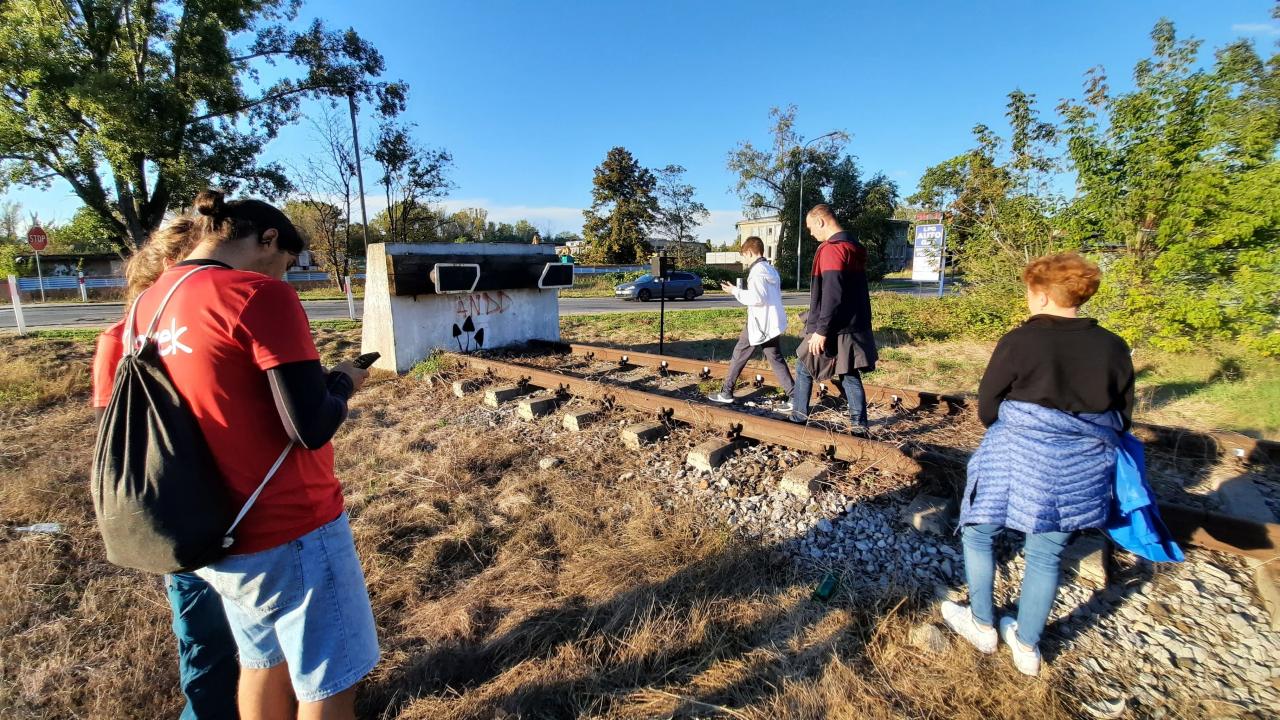
Few people are well acquainted with Targówek. In the minds of Warsaw residents, this district is rather described as: "a peripheral part of the city", "somewhere far beyond Praga", "I heard that the underground is supposed to be coming there - it's incredible!” or „Yeah, I know, I know. Sometimes, I go to IKEA there”. However, the district is inhabited by active residents, coming from diverse backgrounds, building unique neighbourhood communities, so often disappearing in other parts of the city.
Actually, the city’s origins can be traced back to Bródno in Targówek, where the first inhabitants settled in the 9th century. Therefore, it seems to be the right idea to reach out Warsaw residents and Poles, and present Targówek as an interesting area, full of charming nooks and crannies, artisanal enclaves and historical curiosities. And above all, it presents an interesting story about building neighbourhood communities, relevant for everyone in these challenging times.
All right, but how can you convince yourself and others to go beyond your own enclave? How to reach out and attract the inhabitants of Warsaw? How to define the local potential? And how to organise a festival in Targówek similar to Budapest100, which celebrates the built – originally historic - heritage strongly together with residents and volunteers, aiming at activating communities along with the community valorisation of heritage?!
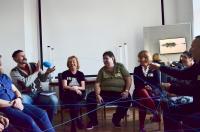
Targówek, as a district, is in many ways challenging - extensive, divided by arteries and diverse. The lion's share is Bródno, with prefabricated housing estates and organised park areas. Targówek Mieszkaniowy is a mixture of Socialist housing blocks and old tenement buildings. There are also some examples of modern architecture, similar to blocks of flats and tenement houses. Zacisze is an area mostly built-up with multi-family and single-family houses, surrounded by gardens and small streets. And finally, one of the most original parts of Targówek, namely Targówek Fabryczny. It is a post-industrial area, with pre-war tenement houses, dovecotes, factories, tracks and a newly built large housing estate. We focused our attention on Targówek Fabryczny, as the least known part, located on the sidelines, but also distinguished by its originality against the background of the rest of Warsaw.
How did we plan the Festival?
First of all, we searched for local gems. We reached out to the biggest regional entrepreneurs, who would gladly let us enter into their factories, allow us to use the tracks for handcar rides and also financed the final dancing party of the festival. Our plan was to start with a great breakfast at the Rampa Theatre, which would open its nooks and crannies for those who want to come in, show how it works and introduce the residents to its projects. The theatre was also supposed to be a starting point for a guided cycling tour through the festival area and its attractions. In the meantime, other festival projects would start: the inhabitants would talk about dovecotes, their allotment gardens, the vicarage would let into the bell tower built of railway sleepers. The library, the Local Activity Centre, a never-put-into-use Metro Station, murals, garden rest in Zacisze... Dance, refreshments, and many-many more. The partners were ready, the schedule was written, our volunteers were preparing a promotional campaign and... the first lockdown occurred. It was on 13th March 2020, while our festival was planned for the 6th June 2020. We gave ourselves time till the end of April to decide what to do. Uncertainty about legal regulations and the development of the pandemic situation made us decide to postpone the festival to April 2021.
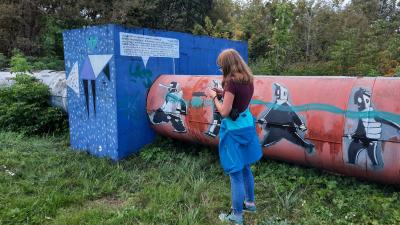
Since then, we started to meet virtually. Now, there are 5 months left to our festival, as it is planned on 25 April 2021.
What did we gain from URBACT?
When we joined the URBACT project, we focused on its main premises - establishing a new quality of cooperation between the Municipality Office, entrepreneurs, residents and activists. Our aim was to transfer the practices of the Budapest festival to our home city in the most appropriate way. We were very inspired by the slogan of opening up to the residents of Warsaw, supporting the sense of local pride and integrating Targówek residents. The goal seemed ambitious but measurable and developmental. Meanwhile, at the peak of our preparations, we confronted ourselves with a new, huge challenge, namely the Covid-19 pandemic, which forced us to adjust our working methods to an entirely new situation.
It is a great discovery for me, as coordinator of the Local Support Group, that a core of strongly committed people has emerged in our group. This group responds to the challenges of the present time with accessibility, creativity and flexibility. I hope that in the course of our further work, more and more space will be found for those who need clear guidelines and stability. At this stage of our work, the diversity of the group has proved very successful.
Welcome! Everything is fine. (How does it look from the Helicopter View?)
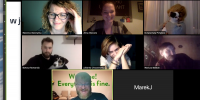
How we implement successful practice Budapest100?
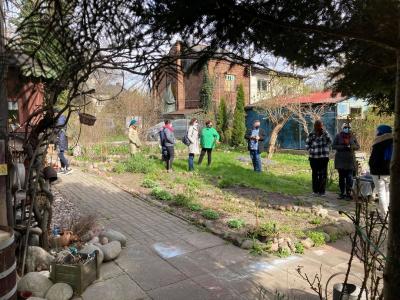
The event had two parts: stationary (outside) offline and online.
During the Festival visitors could visit the 22 festival places and listen to the stories told by local residents and people associated with / related to the Targówek area. In some places (indicated) they could meet the person who shared the information about the place and join the activity. In all festival points were a poster with a QR code which put the listeners through the video about the place.
The visitors could join the online Quiz which was connected with the history of the festival places. They could find the clues to the Quiz questions in videos in QR codes. For 15 right answers from 22, the participants have got wireless headphones.
The online part of the festival included:
(1) discussion about the history of Praga and Targówek districts,
(2) solarigraphy workshop and the instruction of the decoupage.
An additional attraction was the geocaching walk named “Geo-Zacisze”. The walk was organized by the festival partner - Zacisze Culture Centre. To take part in the walk the participants should download a free application dedicated to the game. Using their phones they could find the cache and know the local story.
Ania Owsiany, ULG Coordinator
